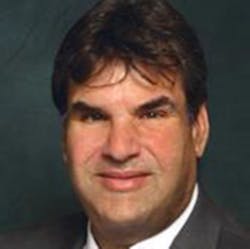At a recent Health IT Policy Committee meeting, co-chair Paul Tang, M.D. said that the hospitals that are attesting to Stage 2 of meaningful use under the Health Information Technology for Economic and Clinical Health Act (HITECH) before October 2014 are comparable to “students who turn their homework in early.”
If that’s the case, then consider Citrus Valley Health Partners (CVHP), a three-hospital system headquartered in Covina, Calif., the valedictorian of its class.
It was noted at that meeting only four hospitals and 50 eligible physicians have so far attested to Stage 2 in seven months of reporting. CVHP is one of them, having already completed all of its reporting for year one of Stage 2.
Not only is this feat impressive for the mere fact that CVHP is one of the first in the country to achieve it, but for the complexity of it all. First, there is the organization’s overall makeup. Along with three hospitals, the health system includes a hospice and a home health agency, a joint surgery venture, 3,000 staff members, and 750 physicians. Furthermore, it attracts a large number of patients who suffer from chronic illness and diabetes and have to move between the various locations.
From a health IT perspective, “We have pretty much every flavor of EHR in the ambulatory space depending on what physicians chose for their practice,” says Linda Nolton, CVHP’s HIE project manager. Specifically, there are systems from three vendors from the Chicago-based Allscripts, the San Antonio-based Office Ally, and the Brea, Calif.-based small company called WeBeDoctor. Meditech (Westwood, Mass.) is used as the inpatient system across all three hospitals.
Stage 2 requires eligible providers to provide a summary of care record for more than 50 percent of transitions of care and referrals. And of those, 10 percent must be done electronically. All told, it took quite a bit to get CVHP to get to this point.
“No one has done this before, so we were learning as we go on how best to do this,” says Martin Kleinbart, chief strategy officer for CVHP. The health system made us of health information exchange (HIE) technology from the Pittsburgh-based dbMotion to connect its various systems to achieve the transitions-of-care requirements.
Martin Kleinbart
Using HIE for TOC Requirements
The HIE technology allows for providers to send and receive acknowledgement of the transition-of-care summaries for patients who were discharged back to their referring physicians. It transmits the summary so that the referring doctor can save the patient data as a PDF, bring it into the EHR, or print it out. It’s all done through the health information service provider (HISP) functionality, also from Allscripts.
What’s even more remarkable about this process is that, as early as May of last year, CVHP was unsure how it was going to use dbMotion’s HIE technology for Stage 2. Because there was no precedent, the involved parties were never certain on what was going to work.
“It all came down to the 11th hour. All through the holidays, no one took any time off,” Nolton says. She adds what made it even more difficult was there was no one view through the network to the see the transmission occur as planned. “When the message didn’t get where it was supposed to go and there was a rejection, it was hard to see where it failed.”
Nolton said she hopes to one day talk to people from the Office of the National Coordinator of Health IT (ONC) to ask them how healthcare organizations are supposed to track this transmission. She notes that there are other physician EHR systems within its organization that have yet to be connected through the HIE, but they have to get the vendors on board.
“It’s been so important to keep pushing [the vendors]. If they are going to certify on these measures it’s important that they really understand the impact, if you say, ‘I am certified I should be able to use these things.’ [The vendors] never could test end-to-end. You have to know your vendors, know their capabilities and get to the smartest people in the room,” Nolton says.
Other Stage 2 Challenges
The transitions-of-care requirement wasn’t the only difficult measure of Stage 2. According to Kleinbart, it wasn’t natural for a hospital to get patients to view, download, and transmit their data. At the recent Health IT Policy Committee meeting, ONC’s Jennifer King reported that only 10 percent said they had the capability to let patients view, download and transmit their data, with transmit being the least common.
“In our community, we have what I refer to as ‘portal fatigue’ because there are [independent physician associations] that have a portal, medical groups that have a portal,” Kleinbart says. “We’re out there trying to push our portal. It took a sustained effort from a lot of our staff members to hit that five percent. They directly engaged with patients on discharge and made a concerted effort to let people know.”
Ultimately, Kleinbart envisions a future where there is a single portal for the entire area. This potential community-wide patient engagement platform is part of the health system’s overall plan of working with local partners to create a system of shared data for population health management. Analytics and predictive modeling will be a focus as well, he says.
“Meeting MU2 is nice, but it really does play into where we’re going as an organization, which is to build out continuous care through partnerships. Part of my job as strategy office is to identify community partnerships. This kind of transitions of care will help up building out that network,” Kleinbart says.



